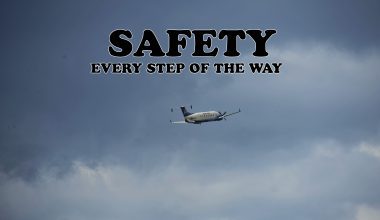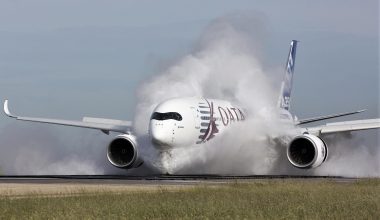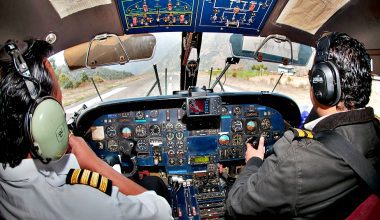We know how high our aircraft are flying by pilots announcement or Inflight Entertainment (IFE) screen when we inside an airplane. Why is that? How high does a plane fly, and why?
Each type of aircraft has a limit set for its maximum allowed flying altitude and an optimum operating range. These limits shall guide the height at which the aircraft operates, rather than any legal and regulatory requirements. Since air traffic control, of course, has authority over an aircraft’s altitude in any airspace.
The commercial plane can fly between 30000 ft. to 42000 ft. It is about 5 miles to 8 miles above from sea level. A commercial plane can fly higher than this altitude, but that can raise safety issues. As a higher plane cruise, it would take a long time to come back in a safe altitude in any emergency. Another reason is due to the weight of the aircraft. The more you weight harder, it gets back to a certain altitude.

In the case of private and turbojet planes, their maximum cruising altitude is about 15000 ft. These aircraft types use piston-powered engines, which are similar to the engine present in a car. Such types of engines prevent smaller planes from reaching the same altitudes as commercial jets.
Military planes mostly cruise in 50000ft, where business jet cruise in 51000ft. Some rocket planes can fly as high as 100000ft because they specially design for flying higher. Concorde is the only commercial plane to cruise above 60000ft. In 2004, Spaceship One set a world record by flying at a higher altitude with 367490ft. So why do planes fly too high? and how high does a plane fly? So these are some reasons.
How high does a plane fly?
Air resistance
One of the common reasons why an airplane flies to high is air resistance. As we studied in science in junior classes, the higher we go above the ground, the thinner the atmosphere, and thus the less resistance there is to the movement of the aircraft. It is relatively straightforward; in fact, the more air molecules the plane has to travel through, the more energy it takes, the more fuel it takes, and, as a result, the higher the operating costs. It is also freezing up there, around-55 °C, which also helps increase jet engines’ performance. Due to the lower resistance at higher altitudes, commercial aircraft can keep going forward with reduced fuel costs.
Not only that, thin air results in less air movement in plane wings resulting in the inadequacy of lifts. Each aircraft has its wing performance standards for the formation of lifts. Air resistance, therefore, plays a crucial role in making an aircraft fly at a certain height.
Weather
Weather is another important reason for commercial airlines to fly high because they get more stable air and typically do not have to worry about clouds or weather-related incidents like thunderstorms. While aircraft can still fly through clouds and storms, they experience much turbulence when they do. This can cause discomfort in passengers and even create panic on the aircraft. Luckily, pilots are qualified to deal with such circumstances and must report such incidents to the air traffic control room for more assistance and guidance. As an airline, you do not want turbulence; what you want is to make the passengers as smooth as possible.
No Obstacles
Pilots do not want to fly over high towers, buildings, and other ground structures. The sea level defines the terrain, and therefore particular terrain can be much higher than the airway. Therefore, aircraft climb to a sufficient height to keep away from some structure on the ground. Many aviation authorities worldwide are restricted from traveling less than 1000 meters to commercial aircraft unless they occur. This is like noise for reasons of safety and the environment. We all know that commercial aircraft are loud and noisy because you were near to an airport previously.
However, between 30,000ft to 45000ft, airplanes lie on the sweet border between the troposphere and stratosphere. This region is almost free of birds, insects, and microbes, so the chances of a bird strike up there are zero.
Safety Purpose
Safety purpose is one of the factors for how high does a plane fly? Safety Purposes is one of the primary reasons, as well. If some difficulty exists in this height of 5000 feet to 6000 feet, the probability of hitting the ground is high. However, if the airplanes fly above 30000ft, it gives you a lot more time to overcome problems when something goes wrong.






